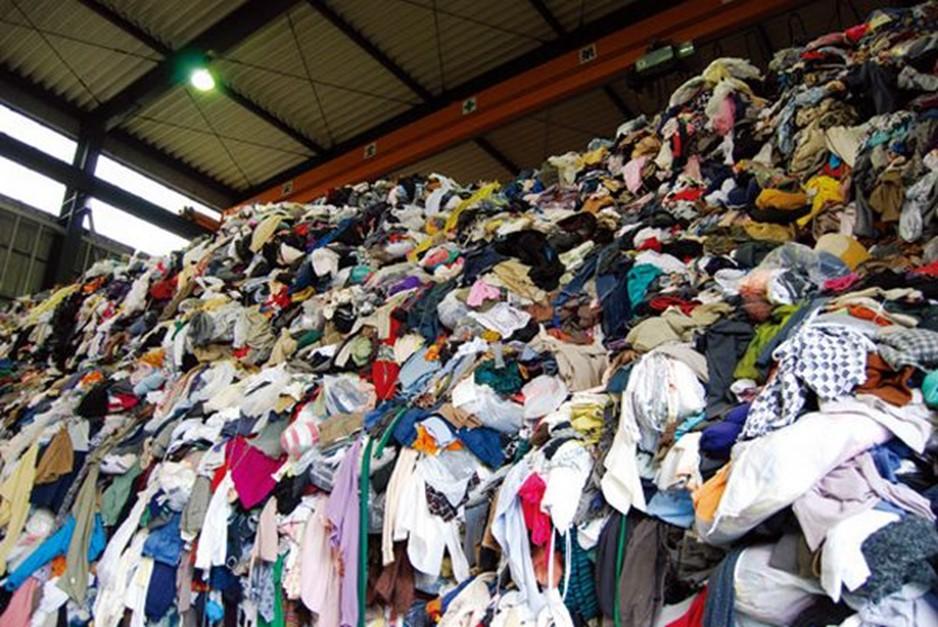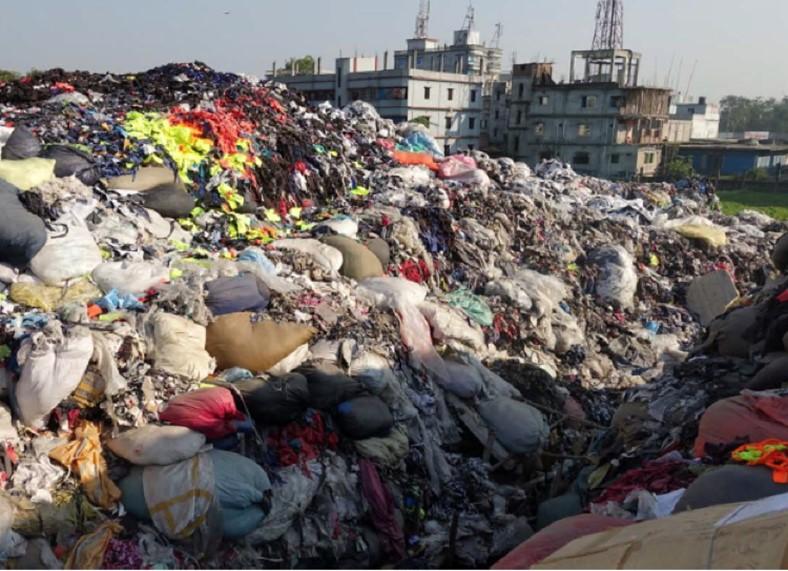
4 minute read
Textile Waste: Where Do Your Clothes Go?
By Becca Bright
Americans today, as a result of societal pressures and global capitalism, are focused on material items, namely clothing. Current trends, driven by social media, require outfits to be on trend, as well as seldom repeated; thus, a necessity for high volumes of clothing is bred. In the United States alone, about 25 billion pounds of textiles are made each year, resulting in about 82 pounds per citizen, (McAllister). The question stands: What happens to these textiles when a consumer is done with it? Textiles are animal-based materials, including wool or silk, plant-based materials such as linen and cotton, and synthetic material like polyester and rayon. Textiles are used in the production of clothing, shoes, linens, and other wearable items. The textile industry is problematic for its significant addition to environmental deg radation, through water usage, pesticide use on crops like cotton, production of greenhouse gases such as nitrous oxide, and most notably, its contribution to landfills, (O’Connor). According to the United States Environmental Protection Agency, textile waste accounts for nearly 5% of all landfill space, (Harmony). In 2017, 16,880 tons of textiles were generated and 11,130 tons were put in landfills, compared to the 1960 statistics of 1,760 tons generated and 1,710 tons put in landfills. Roughly 95% of textile waste is recyclable, but only 15%, or 2,570 pounds were recycled in 2017, (“Textiles: Material-Specific Data”). Second to oil, the textile industry is the largest polluter in the world, (“Fashion Industry Waste Statistics”). Students at Rutgers University— New Brunswick have varying degrees of interest in the fashion industry. However, upon asking students about their viewpoints of textile waste, many students felt similarly. A commonality among many of the responses was the lack of and consequent need for education. Maithreyi Ravula, a School of Arts and Sciences junior, said, “Most people aren't aware of their nearest clothing donation centers and the fact that clothing can be recycled”. As a society, we must focus more attention on educating one another on how our actions and choices impact the environment, as well as better alter natives to utilize. If fast fashion, thrifting, and textile waste were discussed more widely, textile waste reduction would be possible. Olivia Woodruff, a School of Arts and Sciences sophomore, echoed this sentiment and called attention to the difference in public attention to plastic, over textile waste. “I think many people aren’t aware of textile
waste because they can’t see it. They just see their clothes as a whole, but with plastic you actively throw it out, so it is easier to think about the fact that it ends up in a landfill.” Many of the interviewed students agreed with this, saying that they had not focused on textile waste previously, and bought whatever clothing was cheapest and on trend. With the rise of fast-fashion brands, such as Boohoo, Fashion Nova, and Zara, textile waste is rapidly increasing. This leads to the idea of fast fashion brands, that create inexpensive clothing centered around fads, allowing consumers to buy en masse without considering the environmental repercussions. Students largely suggested thrifting as a way to reduce textile waste. Thrift stores allow for consumers to both donate clothing, as well as purchase used clothing, as opposed to sending clothing to landfills. It also allows consumers to stay on trend in a more affordable and eco -friendly way, as opposed to utilizing fast fashion brands. Jason Kang, a graduate student in the Graduate School of Education, said, “The only way to address textile waste is to stop buying from fast fashion places like H&M and buy high quality clothes that last a long time. These clothes should last you years.” The textile industry is problematic for a myriad of reasons, surrounding overproduction, lack of recycling, and degradation of the environment. We must continue to discuss these issues, to spread awareness, and to demand change. Change must be sustainable and accessible in order for society to incorporate it in their fashion choices in an effort to protect the environment and lessen the quantity of textiles in landfills.


Works Cited
“Fashion Industry Waste Statistics.” E D G E, 1 Apr. 2019, edgexpo.com/fashion-industry-waste-statistics/.
Harmony. “The Facts about Textile Waste (Infographic).” Harmony, Harmony Enterprises, Inc., 2 Dec. 2014, harmony1.com/textile-waste-infographic/.
Hinchcliffe, Tom. “Remanufacturing Waste Can Boost Textile Profits and Transparency.” Ecotextile News, Eco Textile, 24 Oct. 2017, www.ecotextile.com/2017102323038/ materials-production-news/textile-waste-can-boost-profitsand-transparency.html.
Jermey. “Textile Waste in the United States.” Residential & Commercial Junk Cleanup & Recycling Rochester, MN, Junk Recyclers, 22 Dec. 2016, www.junkrecyclersllc.com/textilewaste-in-the-united-states.
McAllister, Lydia. “Textile Waste by the Numbers.” Vox Magazine, Vox Magazine, 24 Mar. 2016, www.voxmagazine.com/news/textile-waste-by-the-numbers/ article_9ea228ba-f13a-11e5-8c76-5b50180f85de.html.
O’Connor, Morgan. “The Monster in Our Closet: Fast Fashion & Textile Waste on the Rise.” Center for EcoTechnology, Center for EcoTechnology, 11 Oct. 2017, www.centerforecotechnology.org/fast-fashion-textile-waste/.
“Textiles: Material-Specific Data.” EPA, Environmental Protection Agency, 30 Oct. 2019, www.epa.gov/facts-andfigures-about-materials-waste-and-recycling/textiles-materialspecific-data.










